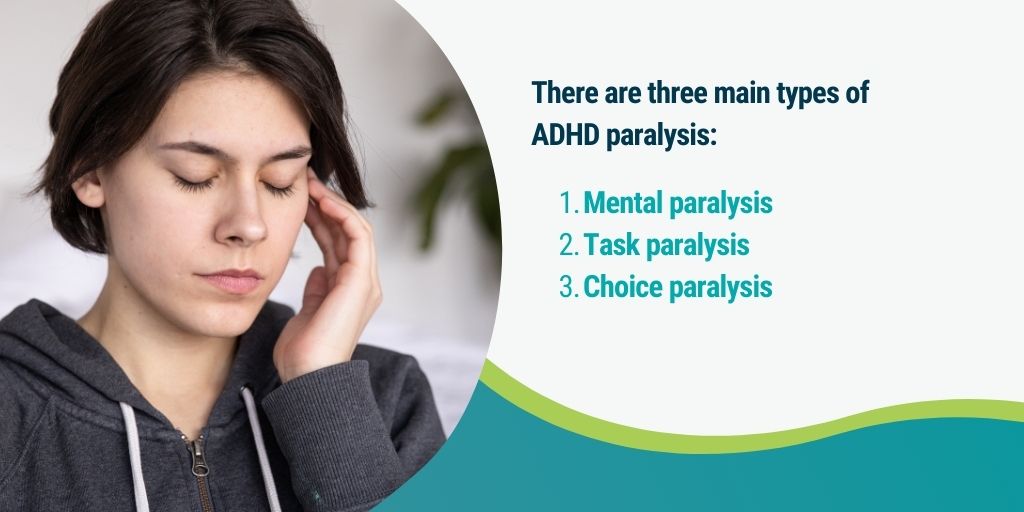
Attention Deficit Hyperactivity Disorder (ADHD) is a neurodevelopmental condition characterized by inattention, hyperactivity, and impulsivity. ADHD affects both children and adults, impacting their daily lives and often leading to difficulties in school, work, and relationships. One lesser-known aspect of ADHD that many individuals struggle with is ADHD paralysis.
ADHD paralysis, also known as executive dysfunction or task paralysis, refers to the inability to initiate, complete, or sustain tasks due to overwhelming feelings of anxiety, stress, or mental fatigue. This can be a debilitating experience for those with ADHD, as it can lead to procrastination, low self-esteem, and a sense of failure.
Types of ADHD Paralysis
ADHD paralysis can be classified into three distinct types: mental paralysis, task paralysis, and choice paralysis. These classifications correspond to specific areas of executive functioning that are impacted by ADHD symptoms. Individuals with ADHD may experience difficulties in one or multiple of these categories over the course of their lives, influenced by the stressors they encounter during episodes.
1. Mental paralysis:
Mental paralysis refers to the difficulty individuals with ADHD may experience in organizing their thoughts or generating mental focus. It can manifest as a sense of cognitive overload or a “brain fog” that hinders their ability to concentrate and process information effectively. People with mental paralysis may struggle with tasks that require sustained attention, complex problem-solving, or cognitive flexibility.
2. Task paralysis:
Task paralysis refers to the difficulty individuals with ADHD may face when it comes to initiating and completing tasks. They may find it challenging to start a task due to difficulties with motivation, prioritization, or a sense of being overwhelmed by the demands of the task. Once they do start, they may struggle to maintain focus and sustain effort, leading to incomplete or abandoned tasks.
3. Choice paralysis:
Choice paralysis, sometimes referred to as decision paralysis, is the difficulty individuals with ADHD may experience in making decisions. This can be particularly challenging when faced with multiple options or when the consequences of the decision are significant. People with choice paralysis may feel overwhelmed by the various possibilities, struggle with indecisiveness, or fear making the wrong choice. This can lead to procrastination, avoidance, or relying on others to make decisions on their behalf.

ADHD Paralysis Symptoms
The symptoms of ADHD paralysis can vary from person to person but generally include:
1. Procrastination:
A hallmark symptom of ADHD paralysis is procrastination, where individuals put off tasks or delay starting them. This can lead to missed deadlines, increased stress, and feelings of guilt or failure. Procrastination is often rooted in fear, anxiety, or perfectionism, making it difficult for individuals to take the first step towards completing a task.
2. Inability to prioritize:
Individuals with ADHD paralysis may struggle to determine which tasks are most important or should be addressed first. They may become overwhelmed by the number of tasks they need to complete, leading to indecision and inaction. This inability to prioritize can result in decreased productivity and increased stress.
3. Disorganization:
Disorganization is a common symptom of ADHD paralysis. Individuals may find it challenging to keep track of tasks, appointments, or deadlines, resulting in missed opportunities or responsibilities. This disorganization can also extend to physical spaces, such as cluttered work areas or living spaces, which can further contribute to feelings of overwhelm and stress.
4. Indecision:
Indecision can be a significant barrier for those with ADHD paralysis. They may have difficulty making decisions, whether big or small, and may constantly second-guess themselves. This indecisiveness can lead to a lack of progress on tasks and increased anxiety, as individuals fear making the wrong choice.
5. Anxiety:
Anxiety is a common co-occurring symptom with ADHD paralysis. Individuals may experience intense feelings of anxiety or stress when faced with tasks or responsibilities, leading to avoidance or procrastination. This anxiety can manifest in physical symptoms, such as increased heart rate, sweating, or difficulty breathing.
6. Low self-esteem:
Those with ADHD paralysis may struggle with low self-esteem and a sense of failure. They might believe they are incapable of completing tasks or feel like they are constantly falling short of expectations. This negative self-perception can contribute to feelings of hopelessness and exacerbate symptoms of ADHD paralysis.
7. Avoidance:
Avoidance is a common coping mechanism for individuals with ADHD paralysis. They may evade tasks or situations that trigger their symptoms, such as social events, work assignments, or personal responsibilities. While avoidance may provide temporary relief, it can also perpetuate the cycle of ADHD paralysis and prevent individuals from making progress in their lives.
How Long Does ADHD Paralysis Last?
The duration of ADHD paralysis can vary depending on the individual and their specific circumstances. Some people may experience brief episodes of paralysis lasting a few hours, while others might struggle with it for days or even weeks at a time. Factors that can influence the duration of ADHD paralysis include the severity of symptoms, the level of support available, and the presence of co-occurring mental health conditions such as anxiety or depression.
How to Treat ADHD Paralysis
There is no one-size-fits-all solution for treating ADHD paralysis, as each person’s experience and needs are unique. However, there are several strategies and treatments that can help individuals manage and overcome their symptoms:
1. Medication:
Prescription medications such as stimulants, non-stimulants, or antidepressants can help improve focus, reduce impulsivity, and alleviate anxiety associated with ADHD paralysis.
2. Therapy:
Cognitive-behavioral therapy (CBT), dialectical behavior therapy (DBT), or acceptance and commitment therapy (ACT) can help individuals develop coping skills, build self-awareness, and address negative thought patterns related to ADHD paralysis.
3. Support:
Connecting with support groups, family members, or friends who understand the challenges of ADHD can provide valuable emotional support and practical advice for managing symptoms.
4. Time management:
Developing effective time management and organizational strategies can help individuals prioritize tasks, stay on track, and reduce feelings of overwhelm.
5. Self-care:
Engaging in regular self-care activities such as exercise, relaxation techniques, or hobbies can help alleviate stress and improve mental well-being.
Treating ADHD at My Psychiatrist
At My Psychiatrist, our team of experienced mental health professionals provides comprehensive and personalized care for individuals struggling with ADHD and related conditions. With offices in Hollywood, Boca Raton, Oakland Park, and Miami, we offer accessible care for patients across South Florida. Additionally, our online services extend our reach, making it possible for individuals throughout the state of Florida to access our support.
Whether you prefer in-person appointments at one of our convenient locations or the flexibility of online services, My Psychiatrist is committed to providing the highest quality care to those struggling with ADHD paralysis. If you or a loved one is experiencing ADHD paralysis, don’t hesitate to reach out to us for support and guidance. Call (877) 548-8089 to schedule an appointment with us today.

